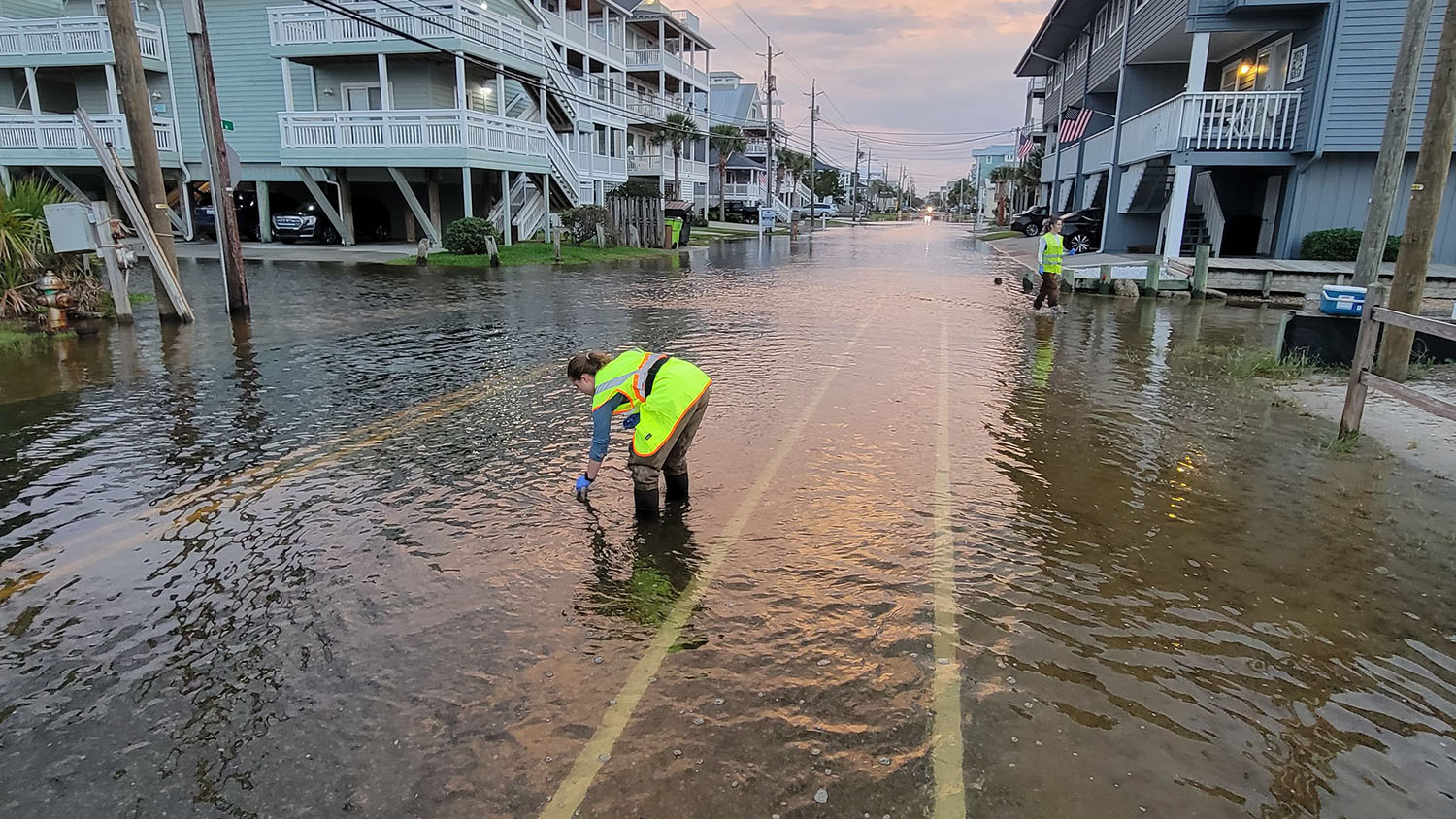Scientists Show Which Plants Benefit Most From Landscape Corridors
Research by a North Carolina State University biologist and colleagues takes a giant step toward showing which kinds of plants benefit from a dominant feature of land conservation plans – landscape corridors, or the thin strips of land that connect isolated patches of habitat.
Knowing how plant seeds are dispersed provides an important way of predicting whether landscape corridors will increase the number of plant species, says Dr. Nick Haddad, associate professor of biology at NC State and co-author of a paper published online this week in Proceedings of the National Academy of Sciences. Focusing on seed dispersal to study the movement ecology of plants is important because it will help conservationists and land planners strategically design landscape corridors to preserve biodiversity, he adds.
Plant seeds dispersed by birds – fruiting plants like wild hollies, blueberries and cherries, for example – benefit most quickly from landscape corridors, the paper shows. Haddad says this was an expected result, as previous research from his study sites has shown that foraging birds frequently use landscape corridors.
Plants dispersed by wind – like certain plants in the grass and sunflower and milkweed families – also benefited from landscape corridors, possibly due to a “wind tunnel” effect inside the corridors, Haddad says, although the benefit occurred more slowly than in bird-dispersed plants. The more random nature of winds made this a bit more difficult for scientists to predict.
Other plant species in which seeds literally drop off the plant, such as morning glories, sweet gum, wild onions, and certain plants in the pea family – so-called “unassisted” species – also benefited from landscape corridors, and surprisingly faster than predicted, Haddad says, although the benefit took the longest amount of time of the three types of plants studied.
Haddad also says that “unassisted” seed dispersal appears to be a misnomer, as evidence shows that the seeds are clearly getting some movement assistance, likely from insects like ants and other animals that prefer to use the landscape corridors.
To perform the research, the scientists collaborated with the U.S. Forest Service at the Savannah River Site National Environmental Research Park, a federally protected area on the South Carolina-Georgia border, to create the world’s largest experimental site devoted to the study of landscape corridors. Most of the Savannah River Site is covered with pine plantations. The U.S. Forest Service created eight identical sites, each with five openings, or patches, by clearing the pine forest. A central patch was connected to one other patch by a 150-meter-long, 25-meter-wide corridor, while three other patches were isolated from the central patch – and each other – by the surrounding forest. The patches are home to many species of plants and animals that prefer open habitats, many which are native to the historical longleaf pine savannas of this region.
The researchers, led by the paper’s corresponding author, Dr. Ellen Damschen of Washington University in St. Louis, surveyed all plant species inside connected and isolated patches over a seven-year period; nearly 300 species of plants were found and classified by dispersal mode. Patches connected by landscape corridors clearly displayed more species diversity than unconnected patches.
“Corridors were superhighways for some groups of plant species, and more like country paths for others,” Haddad says, “and we can now tell which based on how plants are dispersed.”
The research was funded by the National Science Foundation and the Department of Energy-Savannah River Operations Office through the U.S. Forest Service Savannah River Site. The U.S. Forest Service-Savannah River Site provided critical assistance with the creation and maintenance of the experimental landscapes. Scientists at Washington University, the University of Washington, and the University of Florida co-authored the study.
– kulikowski –
Note: An abstract of the paper follows.
“The Movement Ecology and Dynamics of Plant Communities in Fragmented Landscapes”
Authors: Ellen I. Damschen, Lars A. Brudvig and John L. Orrock, Washington University; Nick M. Haddad, North Carolina State University; Douglas J. Levey, University of Florida; Joshua J. Tewksbury, University of Washington
Published: Online the week of Dec. 1, 2008, in Proceedings of the National Academy of Sciences
Abstract: A conceptual model of movement ecology has recently been advanced to explain all movement by considering the interaction of four elements: internal state, motion capacity, navigation capacities, and external factors. We modified this framework to generate predictions for species richness dynamics of fragmented plant communities and tested them in experimental landscapes across a 7-year time series. We found that two external factors, dispersal vectors and habitat features, affected species colonization and recolonization in habitat fragments and their effects varied and depended on motion capacity. Bird-dispersed species richness showed connectivity effects that reached an asymptote over time, but no edge effects, whereas wind-dispersed species richness showed steadily accumulating edge and connectivity effects, with no indication of an asymptote. Unassisted species also showed increasing differences caused by connectivity over time, whereas edges had no effect. Our limited use of proxies for movement ecology (e.g., dispersal mode as a proxy for motion capacity) resulted in moderate predictive power for communities and, in some cases, highlighted the importance of a more complete understanding of movement ecology for predicting how landscape conservation actions affect plant community dynamics.


